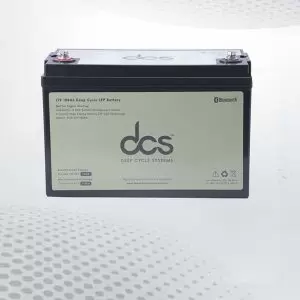In recent years, lithium under bonnet batteries have gained significant traction due to their notable advantages over traditional lead-acid batteries. These lithium batteries are renowned for their impressive efficiency and lightweight design, making them a favourable choice for many vehicle owners. Lithium batteries offer a considerably longer lifespan and much faster charging times, which can enhance the overall performance and reliability of your vehicle.
This type of battery is particularly beneficial for those looking to reduce the overall weight of their vehicle, thereby potentially improving fuel efficiency. Additionally, lithium batteries maintain a consistent power output, ensuring that your vehicle’s electrical systems remain stable and functional. Whether you aim for improved performance or reliability, a lithium under bonnet battery presents a modern solution for today’s vehicles.
Safety Measures for the Lightest Deep Cycle Battery
Proper safety measures are essential when handling and replacing car batteries. First, always wear appropriate safety gear, such as gloves and safety goggles, to protect yourself from potential acid spills and electrical shorts. It’s advisable to work in a well-ventilated area to avoid the accumulation of harmful gases. Before starting, ensure your vehicle is turned off and the keys are removed from the ignition to eliminate any risk of accidental starts.
Additionally, keep a fire extinguisher nearby as a precaution. When disconnecting the battery cables, always start with the negative terminal to reduce the risk of electric shock. Avoid touching both terminals simultaneously to prevent any chance of short-circuiting. Use insulated tools where possible and handle the battery carefully, being mindful of its weight. Make sure to keep the old battery upright to prevent acid leaks. Once removed, store it in a secure location until it can be disposed of properly at a local recycling centre.
Collecting Tools and Materials
To successfully replace your car’s battery, gather the necessary tools and materials beforehand. Essential tools include a spanner set for loosening terminal nuts, a battery terminal puller to safely disconnect the cables, and a wire brush for cleaning any corrosion. You will also need a new lithium battery, which should match your vehicle’s specifications. Anti-corrosion spray is vital for treating metal parts and preventing future rust. A clean cloth will be useful for wiping down the battery tray and ensuring a clean installation environment. Having all these items prepared in advance will help streamline the replacement process.
Removing the Old 300 Amp Hour Deep Cycle Battery
Start by ensuring your vehicle is turned off and the keys are removed from the ignition. Begin by disconnecting the battery cables, starting with the negative terminal to minimise the risk of electrical shocks. Use a spanner to loosen the terminal nuts if they are tight.
Once the negative cable is disconnected, proceed to the positive terminal and do the same. With the cables safely removed, you can now lift the old battery out of the compartment. Handle the battery carefully, bearing in mind its weight. Keep the battery upright to avoid any acid spills. Once removed, place the old battery in a secure, upright position until it can be properly recycled.
Preparing the Battery Compartment
Inspect the battery tray for any dirt, debris, or residue left from the previous battery. Use a clean cloth to wipe the area thoroughly, ensuring a clean surface for the new battery. Check the metal parts of the tray for signs of corrosion or rust. If you notice any, use a wire brush to remove the corrosion effectively. Once the area is clean, apply an anti-corrosion spray to the metal parts to protect them from future rust and degradation. Ensure that the spray is evenly distributed and allow it to dry completely before proceeding with the installation of the new lithium battery.
Installing the New Lithium Battery
Carefully position the new lithium battery into the cleaned and prepared compartment. Make sure the battery is properly aligned with the terminals and securely fits into the tray to avoid any movement while driving. Consult the installation instructions provided by the battery manufacturer to ensure you’re following any specific guidelines that may apply to your model.
Double-check the orientation of the battery to ensure the positive and negative terminals are correctly aligned with the corresponding cables. Handle the battery gently to avoid any damage to the casing or internal cells. Once the battery is securely in place, ensure that it sits level and stable within the compartment.
Take care to avoid any contact between the battery terminals and metal parts of the vehicle, as this could cause a short circuit. Ensure the battery straps or clamps are fastened tightly to hold the battery in place.
Before connecting the cables, inspect the terminals for any dirt or debris that could hinder a proper connection. Clean them if necessary using a wire brush. Now you are ready to connect the battery cables as outlined in the next section.
Connecting the 300 Amp Deep Cycle Battery Cables
To begin the process of connecting your lithium battery, start by attaching the positive cable to the positive terminal on the battery. This terminal is usually marked with a “+” sign for easy identification. Ensure the connection is solid by tightening the terminal nut securely using a spanner. A firm connection is essential for optimal performance and to prevent electrical issues during operation.
Once the positive cable is securely attached, move on to the negative cable. Attach it to the negative terminal, which is marked with a “-” sign, and tighten the nut in a similar manner to ensure it is firmly fastened. Take a moment to double-check that both the positive and negative cables are properly connected and there are no loose or weak connections. Loose terminals can lead to voltage drops or sparks, compromising the safety and efficiency of your setup.
It’s crucial to ensure that the cables are not in contact with any metal parts of the vehicle or equipment, as this could result in a short circuit. Use cable ties to organize and secure the wires, keeping them away from any moving parts or areas of potential damage. Proper cable management not only enhances safety but also improves the longevity of your battery connections.
Finally, ensure that terminal caps are in place to protect the connections from external elements like dirt, moisture, or debris. This added protection prevents corrosion and ensures consistent performance over time, making your lithium battery setup reliable and long-lasting.
Maintenance Advice for Lithium Batteries
Routine inspections are vital to ensure the longevity and performance of your lithium battery. Regularly check the battery terminals for any signs of corrosion or looseness, and clean them using a wire brush if necessary. Keeping the battery clean and dry is crucial; wipe away any dirt or moisture that may accumulate on the surface.
If your vehicle is not in use for an extended period, store the lithium battery in a cool, dry place to prevent degradation. Ensure the storage area is free from extreme temperatures and humidity. Use a battery charger specifically designed for lithium batteries, as this will help maintain optimal charge levels and extend the battery’s lifespan.
Avoid overcharging the battery, as this can cause damage to its internal cells. If you notice any unusual behaviour, such as the battery not holding charge or swelling, it’s advisable to consult a professional for further assessment. Regular maintenance and proper handling will help you get the most out of your lithium under bonnet battery, ensuring it remains reliable for years to come.
Conclusion
Switching from a traditional lead-acid battery to a lithium under bonnet battery can significantly improve your vehicle’s performance and reliability. This modern solution not only enhances efficiency but also contributes to better fuel economy by reducing the overall weight of your car. Throughout the installation process, prioritising safety and using the correct tools will ensure a smooth and successful transition. Regular maintenance and proper handling will further extend the lifespan of your new battery, making it a worthwhile investment. By adhering to the outlined steps and ensuring compatibility with your vehicle’s specifications, you can enjoy the benefits of a lithium under bonnet battery for many years.
FAQs
Can any car use a lithium under bonnet battery?
Answer: Not all cars are compatible with lithium under bonnet batteries. Before replacement, check your vehicle’s specifications to ensure it supports lithium batteries. Factors such as space under the bonnet, voltage requirements, and the vehicle’s alternator compatibility are critical considerations.
Do I need special tools to replace my car’s battery with a lithium one?
Answer: Replacing a car battery typically requires basic tools like a spanner, wrench, and potentially a socket set. However, for lithium batteries, additional considerations such as ensuring proper mounting and terminal connectors may require specific tools depending on the model.
Are there any safety precautions I should follow during installation?
Answer: Yes, always disconnect the negative terminal first to avoid accidental short circuits. Wear gloves and eye protection, and ensure the car is turned off. Additionally, confirm the polarity before connecting the lithium battery terminals to prevent electrical damage.
Will switching to a lithium under bonnet battery affect my car’s performance?
Answer: Yes, lithium batteries are lighter and provide higher energy efficiency compared to traditional lead-acid batteries. This can result in improved fuel efficiency, faster engine starts, and reduced wear on your car’s electrical system. However, ensure your car’s alternator can handle lithium charging requirements to optimize performance.



